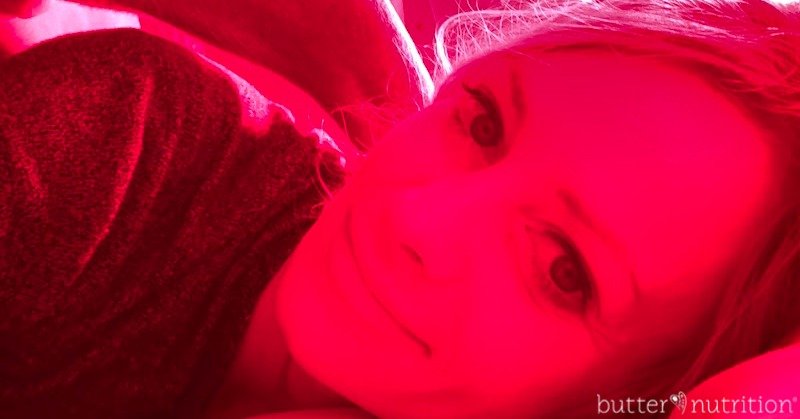
My fascination with light therapy began about five years ago while studying the work of Dr. Ray Peat. As I studied his work I would frequently find references to the importance of bright light on your skin to signal your cells to create more energy or adenosine triphosphate (ATP) as well as its ability to aid in hormone synthesis (the production of sex hormones).
I was fascinated with what he said about red light in his work, such as…
“Penetrating red light is possibly the fundamental anti-stress factor for all organisms. The chronic deficiency of such light is, I think, the best explanation for the deterioration which occurs with aging. Enzyme changes, free radical changes, structural and respiratory changes are all involved as consequences of darkness stress.” – Ray Peat, PhD
Ever since, I’ve been on a quest to get more light of any kind into in my life, especially in Seattle’s gloomy winter months…
WHAT IS RED LIGHT THERAPY?
In talking about red light therapy, the terminology can be a little confusing. Red light therapy is also known as photobiomodulation (PBM) or low level light therapy (LLLT) and sometimes cold laser therapy. It’s considered low level because it has a lower energy density when compared to higher intensity laser therapies.
Light therapy comes in all sorts of wavelengths:
Ultraviolet or UV light: 300-400 nm
Natural Sunlight: 400-700 nm
Red light: roughly 620-700 nm
Near Infrared light: 700-1000 nm
Red and near infrared light fall into what is known as the optical window or therapeutic window between wavelengths of 650 to 1350nm. Because wavelengths in this range are easily able to penetrate human skin tissue, they are commonly used in PMB or LLLT. Wavelengths from 600-700nm (red light) are used for superficial tissue while longer wavelengths of 780-950nm (near infrared light) are used on deeper tissue. [7]
In nature, you’d get the most red light therapy at sunrise and sunset because that is when the sun gives off the most red (660nm wavelengths) and near infrared light (850nm wavelengths). However, due to modern life you’re probably missing out to some degree on the sun’s natural red light.
BENEFITS OF LIGHT THERAPY
The benefits of light therapy are plentiful, so let’s get started…
First we know that light therapy has been found to be good for skin rejuvenation, things like:
- reversing collagen down-regulation
- skin appearance in aged/photoaged skin
- improvement in wrinkles
- faster wound healing
- improved scar appearance
We also know that light therapy is helpful for hair health, such as in cases of:
- alopecia areata
- androgenic alopecia
Light therapy is also helpful for pain and inflammation, specifically:
- rheumatoid arthritis
- muscle recovery
- carpal tunnel syndrome
- low back pain
And then it’s also great for energy production and thyroid health:
- improves thyroid function
And finally supportive of overall health…
- exercise performance
- eye health
- hormone health
Pretty impressive, right? And there is far more… just take a look at this awesome spreadsheet comprised of thousands of studies on light therapy! It’s pretty amazing that there is this much research on light therapy, but it’s still not quite “mainstream.”
HOW TO TAKE ADVANTAGE OF RED LIGHT THERAPY
About a year ago I started using red light therapy at my local tanning salon, which is basically just a tanning bed that has the UV lights replaced with red light bulbs. I would go several times per week and stay for 20 minutes a session if I could find the time. It was time consuming, and added up to about $360+/year (not including the gas it took to drive there), so it didn’t stick. I gave it up after a few short months.
Other options for red light therapy including purchasing your own device. There are units available of all sizes and it really just depends on how big of an area you want to treat and how long you you want to spend treating it. Many of these devices are quite small and it would take quite a while to expose your whole body for the suggested treatment time.
I wanted to find a way to treat my whole body at home but in a lot less time…